- Identify, document, and evaluate all historic resources constructed before 1974 (50 years of age) within the East and South Lake Morton Historic Districts, including any potential historic resources immediately adjacent to the Historic Districts’ boundaries.
- Create an updated inventory of historic resources in the respective districts including building addresses, architectural styles, construction dates, recommended individual NRHP eligibility, and recommended contributing or non-contributing status.
- Analyze results for recommendations of possible district boundary amendments, potential new designations, and expansion of district periods of significance.
Historic Preservation
With a history going back to Florida’s pioneer days in the 1870s, the City of Lakeland is proud of its unique architectural and cultural heritage. Boasting the world’s largest single-site collection of Frank Lloyd Wright-designed buildings on the campus of Florida Southern College, as well as notable buildings and structures designed by Donovan Dean, Franklin O. Adams, Edward Columbus Hosford, and Charles Wellford Leavitt, Lakeland’s architectural history reflects a diversity of styles and character.
Established in 1980, Lakeland’s historic preservation program protects the irreplaceable architectural, cultural, and historical character of our community. Historic preservation maintains the integrity of the City’s historic districts and local landmarks and ensures that changes to these areas and structures are done in an architecturally appropriate manner that preserves their character. Long-term outcomes of this program have strengthened the local economy by attracting and stimulating private investment, creating new jobs, stabilizing and improving property values, and increasing heritage tourism opportunities. Lakeland was named a Certified Local Government by the National Park Service and Florida Division of Historic Resources in 1989, one of the oldest such designations in the state, which enables it to administer federal and state historic preservation programs. Within the City of Lakeland Land Development Code, Article 11: Historic Preservation Standards defines Lakeland’s historic preservation program.
Facts about Lakeland's Historic Districts
- The City of Lakeland has seven local historic districts with a combined area of 1.42 square miles.
- The districts protect more than 1,600 historic buildings and 13 individual landmarks.
- Together, the districts make up 1.9% of the city's land area and 7.15% of all property parcels.
- About 6% of Lakeland's population lives in a historic district.
Historic Preservation Resources
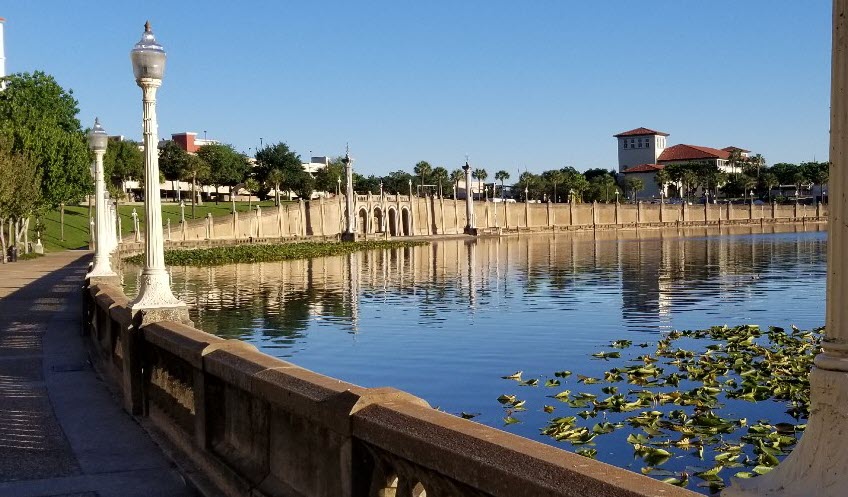
The Lake Mirror Promenade was designed by New York architect Charles Leavitt and dedicated in 1928. It was the first public structure in Lakeland to be named to the National Register of Historic Places.
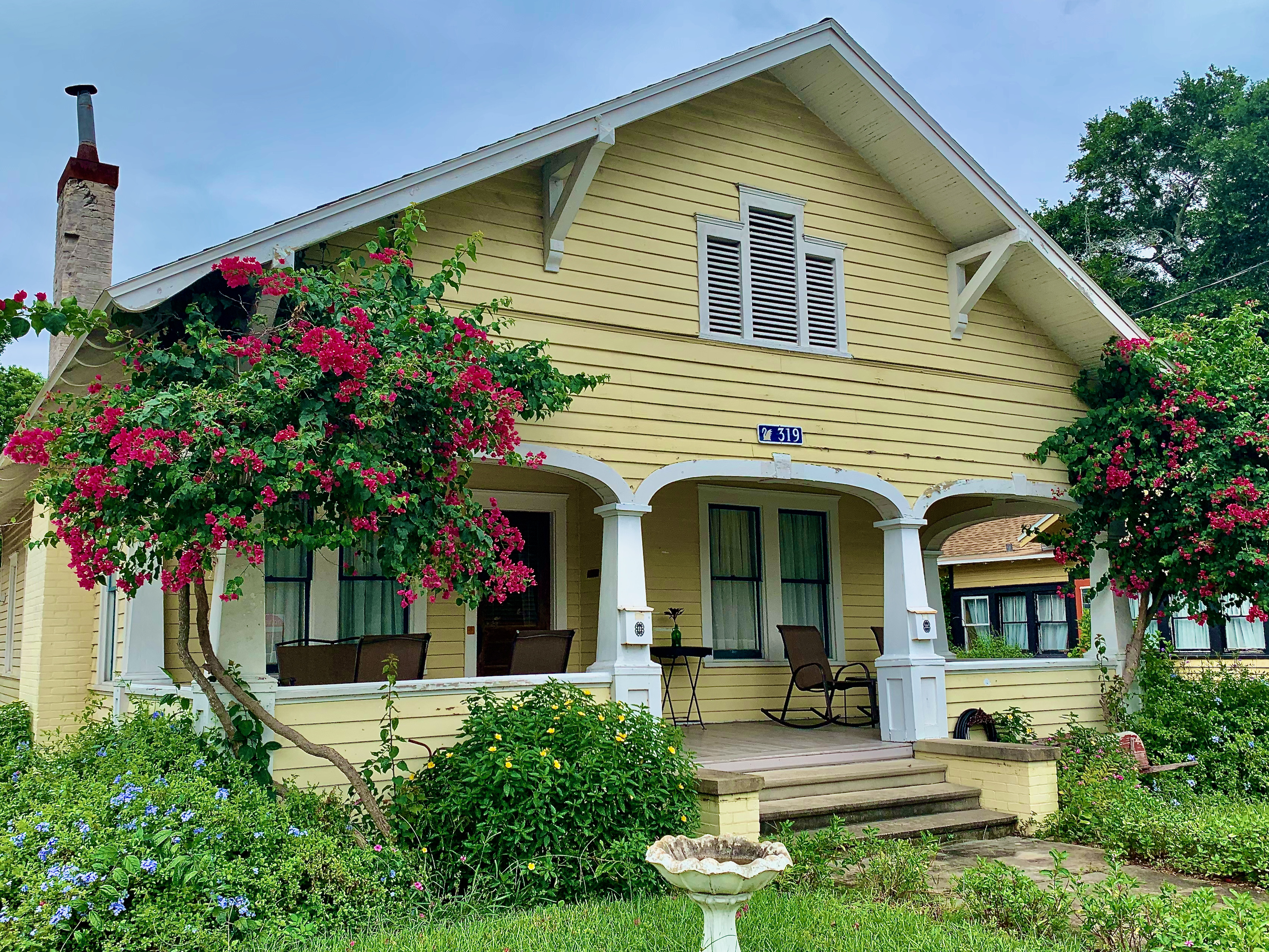
Built in 1901, the classic Craftsman bungalow at 319 Lake Avenue is one of Lakeland's cherished "Century Homes."

The iconic Southgate Shopping Center arch was built in 1957. Designed by architect Donovan Dean, it is 70 feet tall and includes 67 tons of steel. (Photo by Karen Moore Vintage Sign Photography)
Lake Morton Resurvey is Complete!
The resurvey of the East and South Lake Morton Historic Districts has been completed and a final report issued by the City’s consultant, PaleoWest LLC. As a planning and maintenance tool, the periodic resurvey of established historic districts allows the period of significance of an established district to be expanded, newer structures to be included as contributing resources, and existing contributing buildings to be reassessed, which furthers the protection of historic buildings.

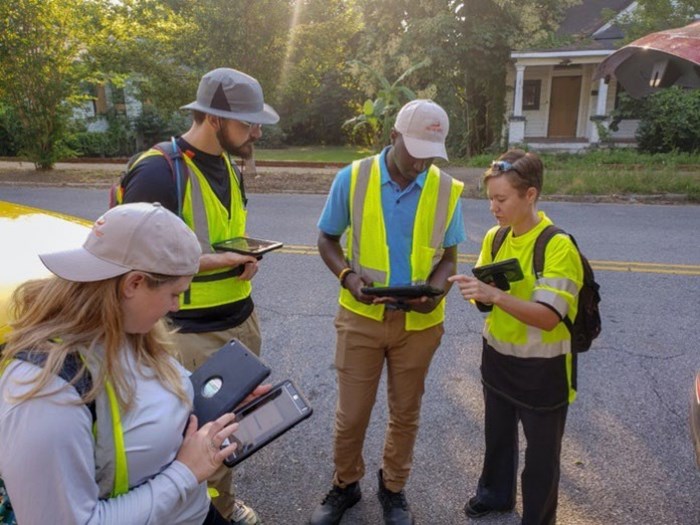
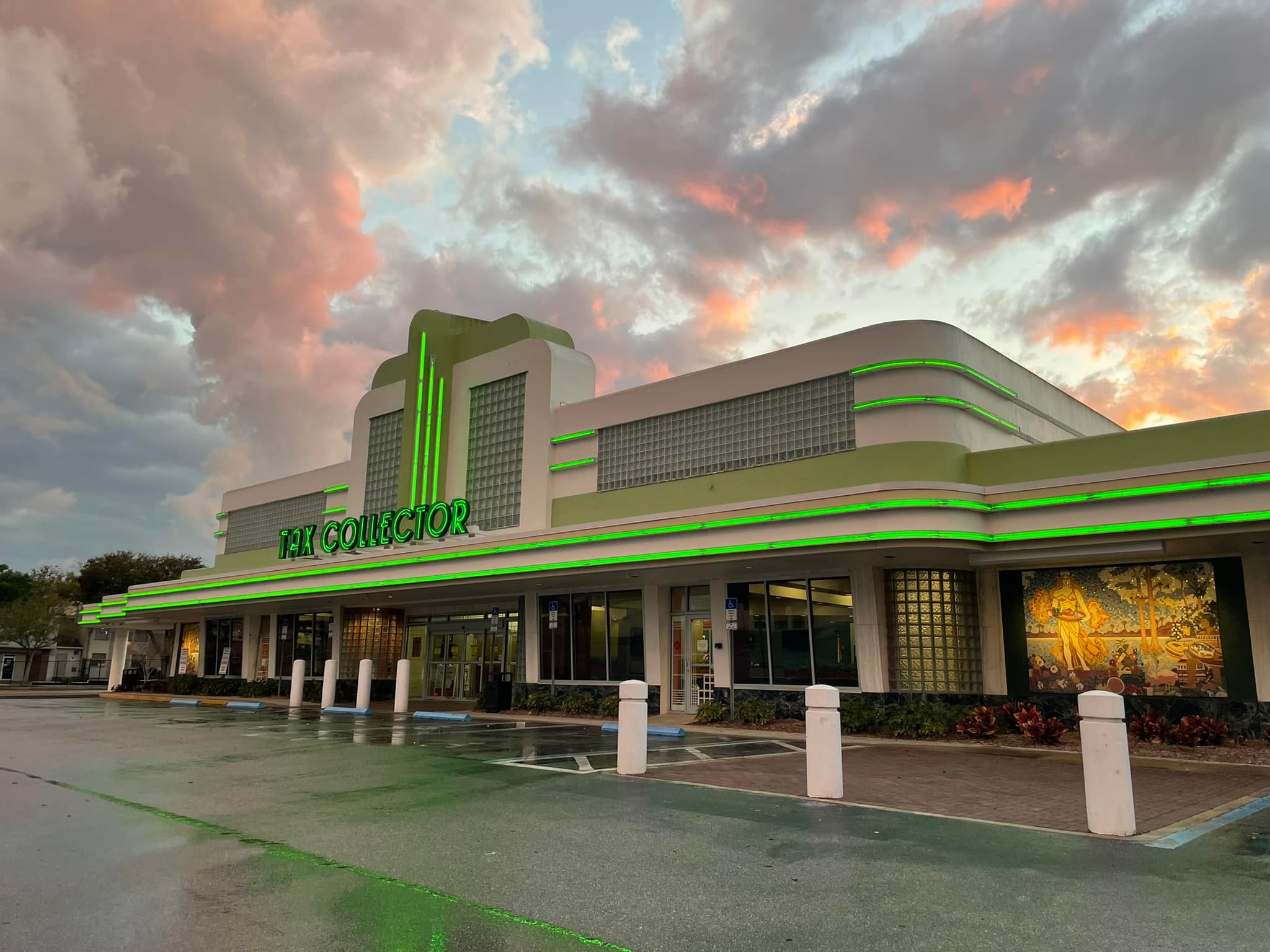
The Polk County Tax Collector's Office Lakeland Service Center is a celebration of art-deco style. It was built in 1953 as a Publix grocery store.
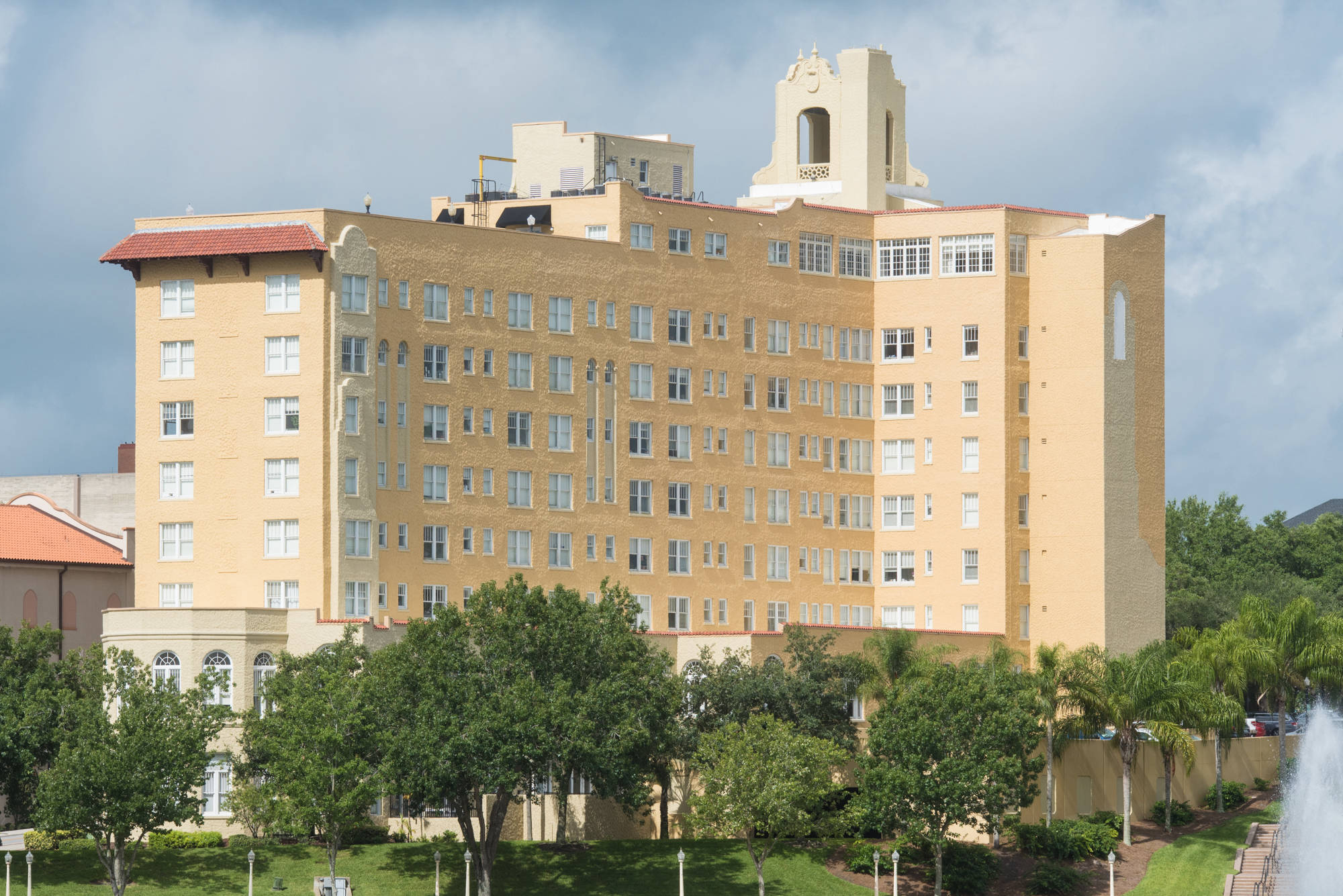
Lake Mirror Tower was originally built in 1926 as the New Florida Hotel. The eight-story structure was purchased by the City of Lakeland and renovated in 2004. It now has 76 apartments.
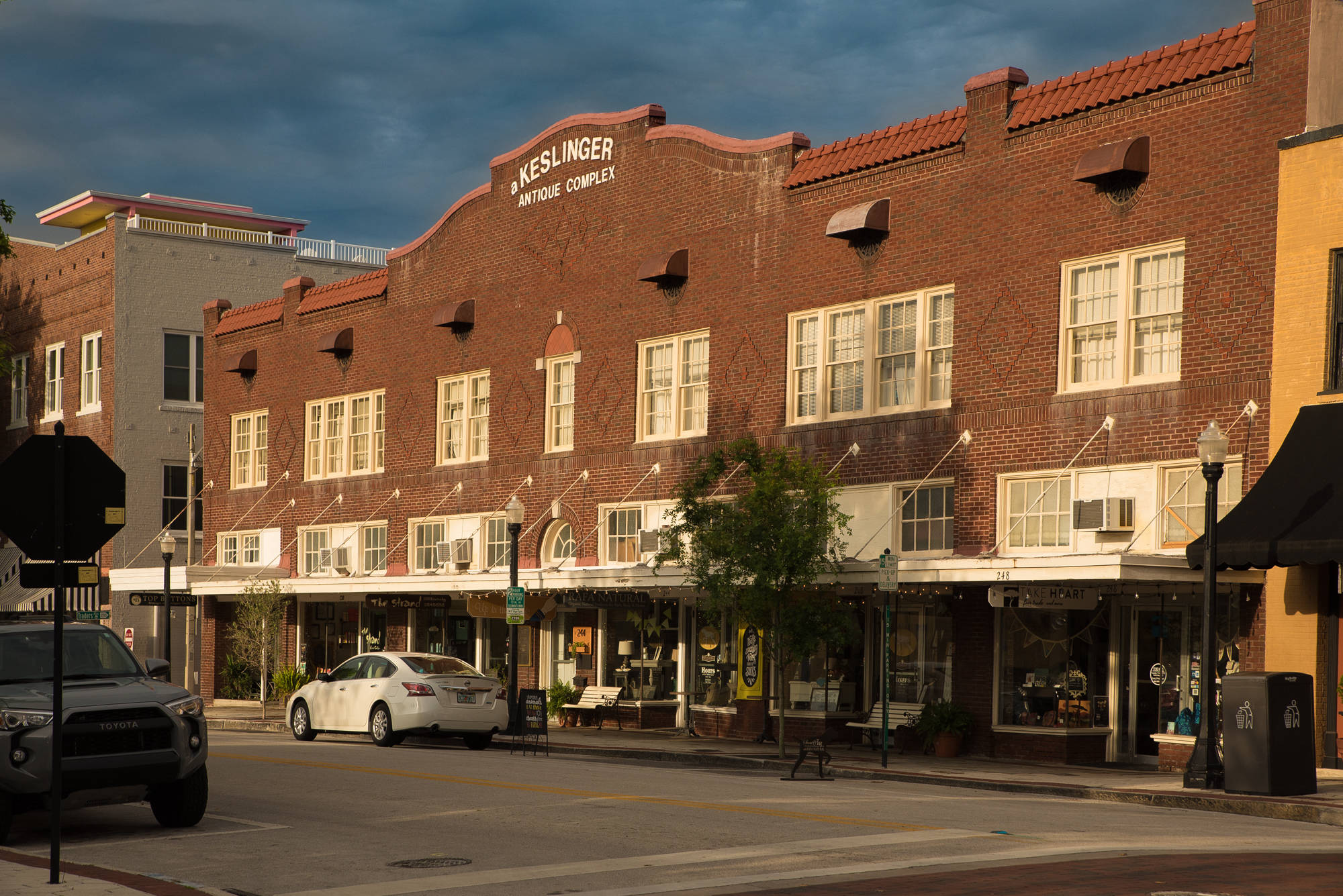
The Keslinger Antiques Complex on N. Kentucky Avenue has housed a number of businesses over the years before becoming part of the Lakeland Antiques District. It was built in 1925 and renovated in 1987.












